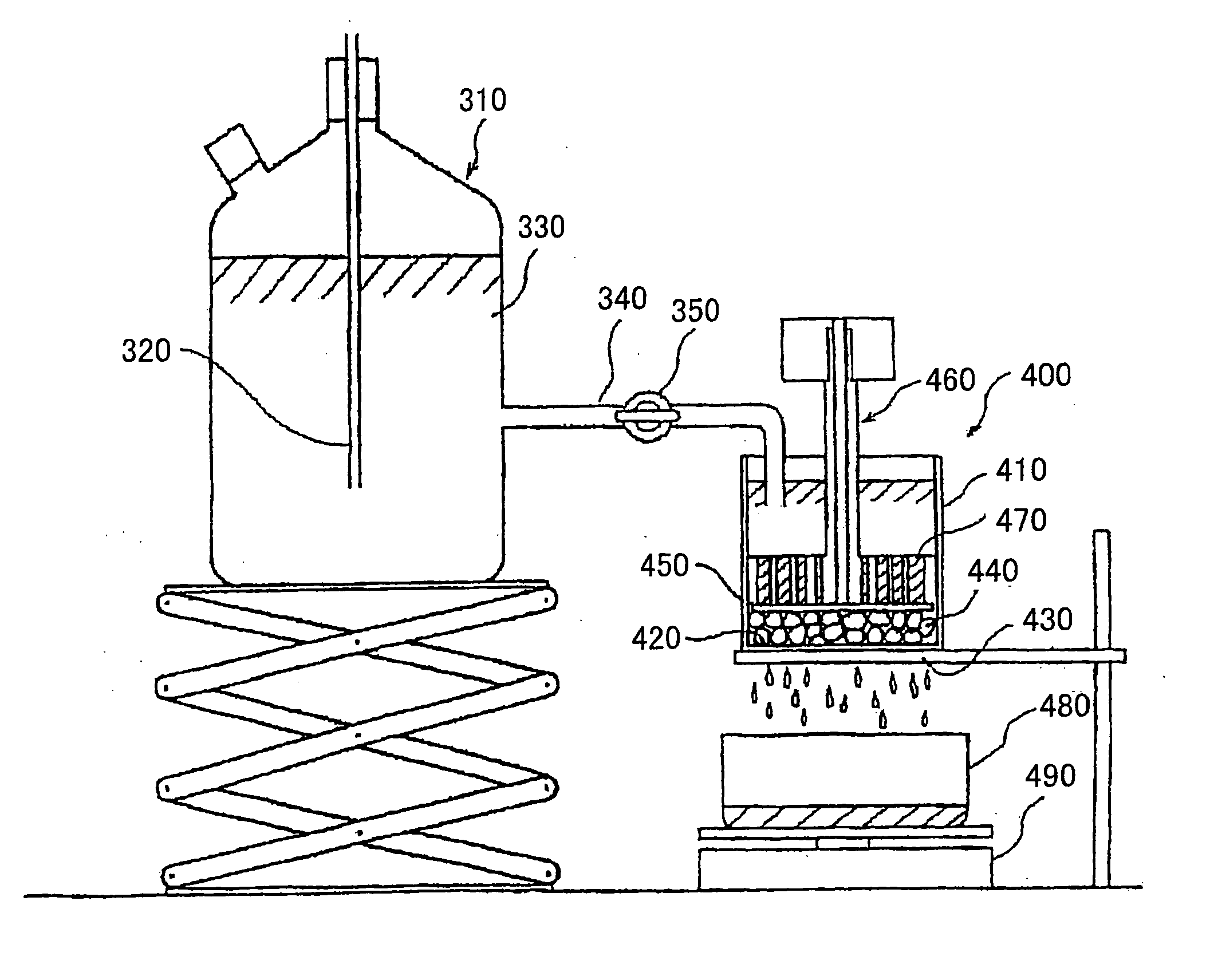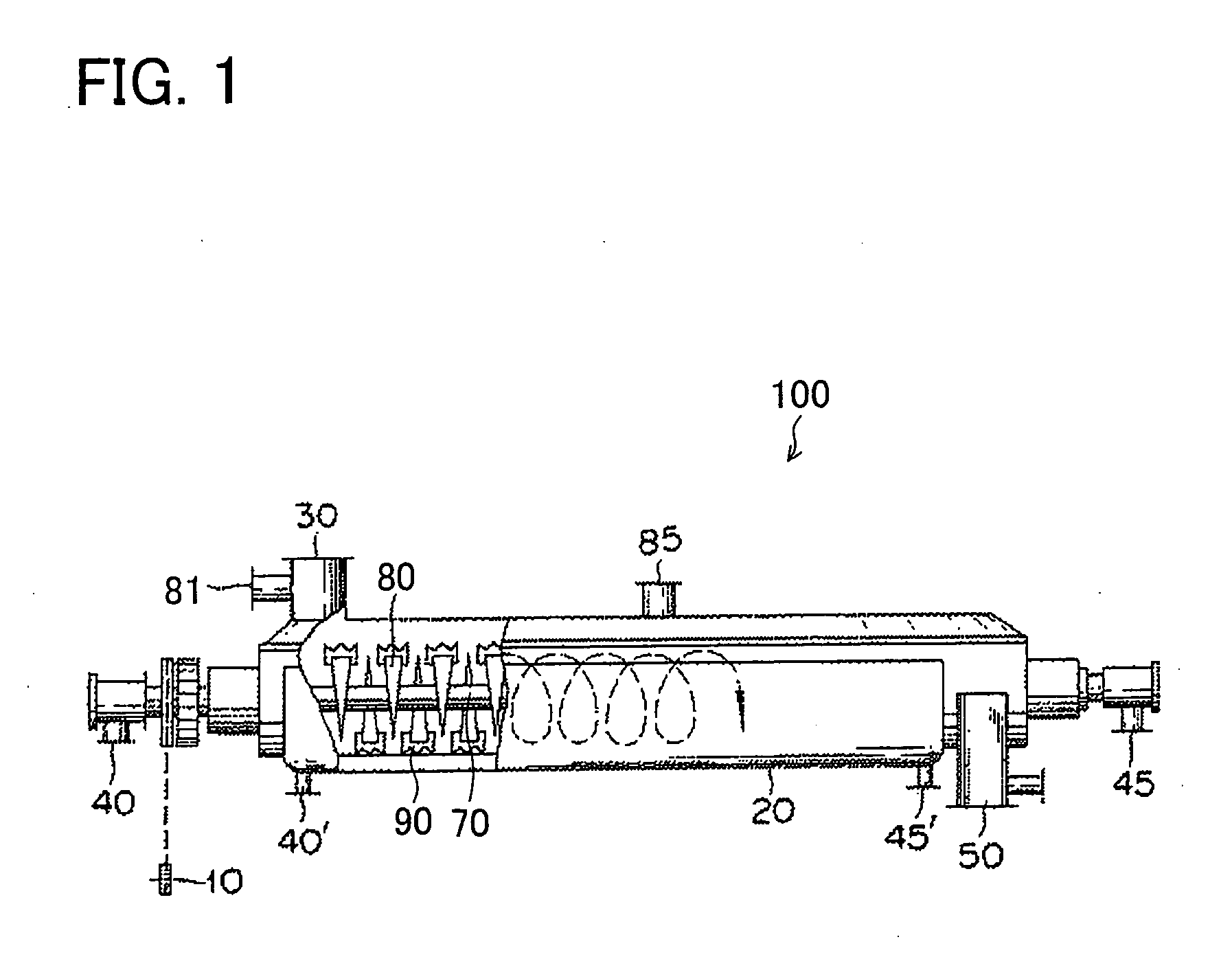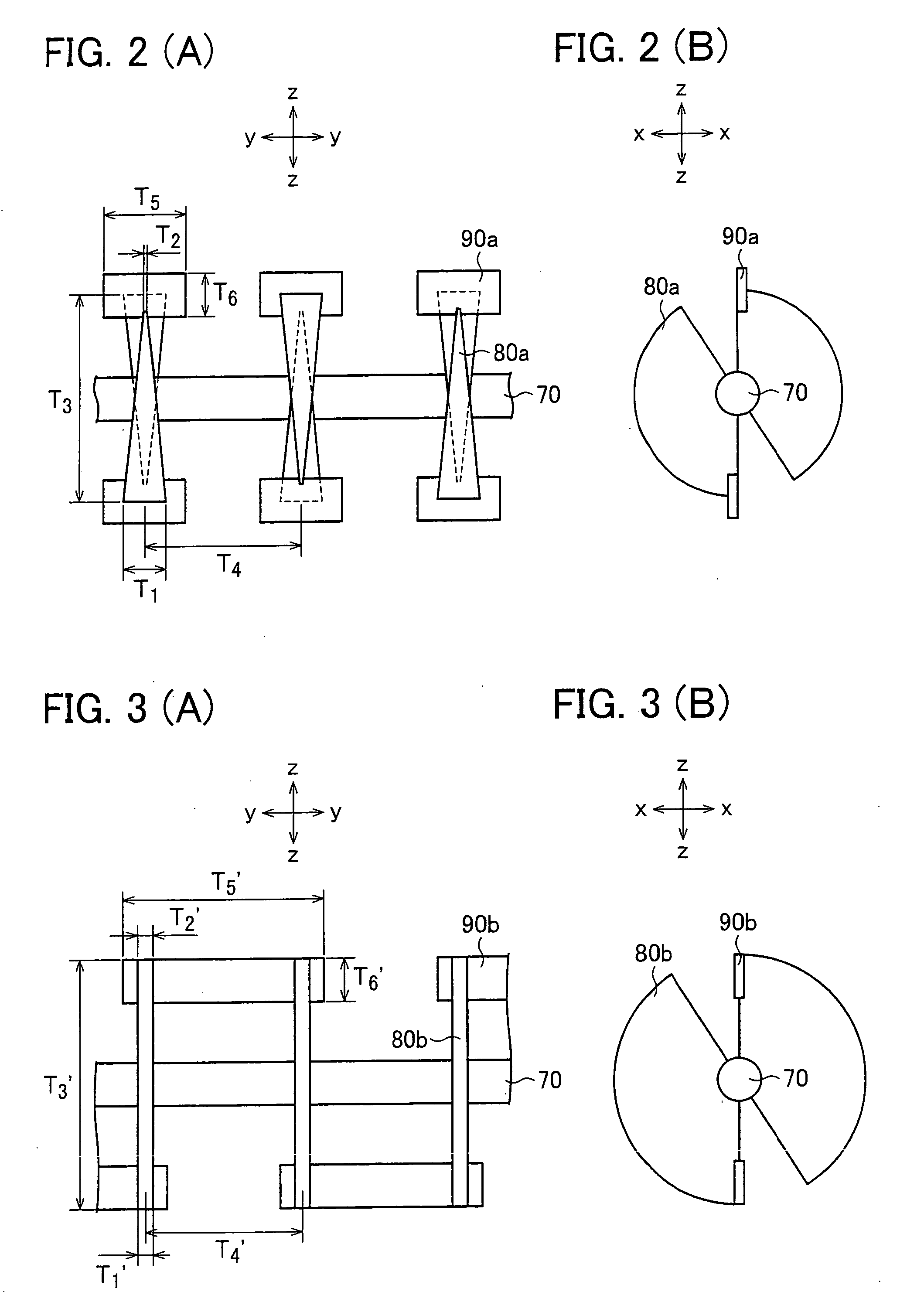Method for surface crosslinking water-absorbing resin and method for manufacturing water-absorbing resin
- Summary
- Abstract
- Description
- Claims
- Application Information
AI Technical Summary
Benefits of technology
Problems solved by technology
Method used
Image
Examples
examples
[0292] The following will explain the present invention in more detail on the basis of Examples and Comparative Examples, however the present invention is not limited to these Examples. Note that the water-absorbing resin and properties of the water-absorbing resin are measured by the following methods.
[0293] Note that since the water-absorbing resin used as an end product such as hygienic goods is wet, measurements are carried out after the water-absorbing resin is separated from the end product and dried at low temperature under reduced pressure (for example, at 60° C. under pressure of 1 mmHg or less for 12 hours). Moreover, the water content of the water-absorbing resin used in Examples and Comparative Examples in the present invention is 6 mass % or less.
[0294] A person with ordinary skill in the art can make various changes, modifications, and alterations within the scope of the present invention. Note that CRC (Centrifuge Retention Capacity), AAP (Absorbency Against Pressur...
manufacture example
Manufacture of Water-Absorbing Resin Precursor
[0313] In a kneader having two sigma blades, (i) prepared was a monomer aqueous solution which contains sodium acrylate, acrylic acid and water, whose monomer concentration was 38 mass %, and whose neutralization ratio was 70 mole %, and (ii) polyethylene glycol diacrylate (the average number of ethylene glycol units: 9) was dissolved as the internal crosslinking agent so that polyethylene glycol diacrylate is 0.03 mole % with respect to the monomers.
[0314] Next, nitrogen gas was blown in the monomer aqueous solution to reduce dissolved oxygen in the monomer aqueous solution, and nitrogen substitution was carried out in the entire reactor vessel. Then, while causing two sigma blades to rotate, sodium persulfate (0.12 g / mol with respect to the monomers) and L-ascorbic acid (0.005 g / mol with respect to the monomers) were added as the polymerization initiator, and the polymerization with stirring was carried out in the kneader. About 40 m...
example 1
[0316] 3.9 mass parts of a surface crosslinking agent-containing aqueous solution containing 0.34 mass part of 1,4-butanediol (hereinafter also referred to as “1,4-BD”), 0.56 mass part of propylene glycol (hereinafter also referred to as “PG”), and 3 mass parts of pure water was sprayed to and mixed with 100 parts by weight of the water-absorbing resin precursor (A), obtained in Manufacture Example, by a continuous high-speed stirring mixer (Turbulizer produced by Hosokawa Micron). Thus, a wet product was obtained. This wet product was subjected to the heat treatment by using a conductive heat transfer trough stirring dryer (produced by Nara Machinery Co., Ltd., Multi-fin Processor; NFP-1.6W) whose paddle (stirring board) diameter was 170 mmφ, heat transfer area was 1.5 m2, and effective volume was 0.089 m3.
[0317] The conductive heat transfer trough stirring dryer was a biaxial trough stirring dryer in which (i) 15 stirring boards each of which has the scraping blade and was a flat...
PUM
| Property | Measurement | Unit |
|---|---|---|
| Length | aaaaa | aaaaa |
| Fraction | aaaaa | aaaaa |
| Fraction | aaaaa | aaaaa |
Abstract
Description
Claims
Application Information
 Login to View More
Login to View More - R&D
- Intellectual Property
- Life Sciences
- Materials
- Tech Scout
- Unparalleled Data Quality
- Higher Quality Content
- 60% Fewer Hallucinations
Browse by: Latest US Patents, China's latest patents, Technical Efficacy Thesaurus, Application Domain, Technology Topic, Popular Technical Reports.
© 2025 PatSnap. All rights reserved.Legal|Privacy policy|Modern Slavery Act Transparency Statement|Sitemap|About US| Contact US: help@patsnap.com



